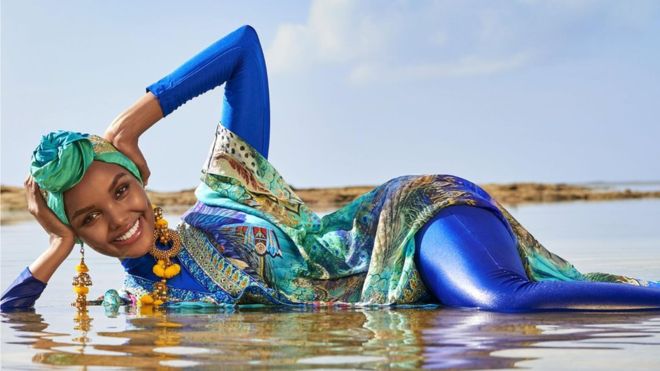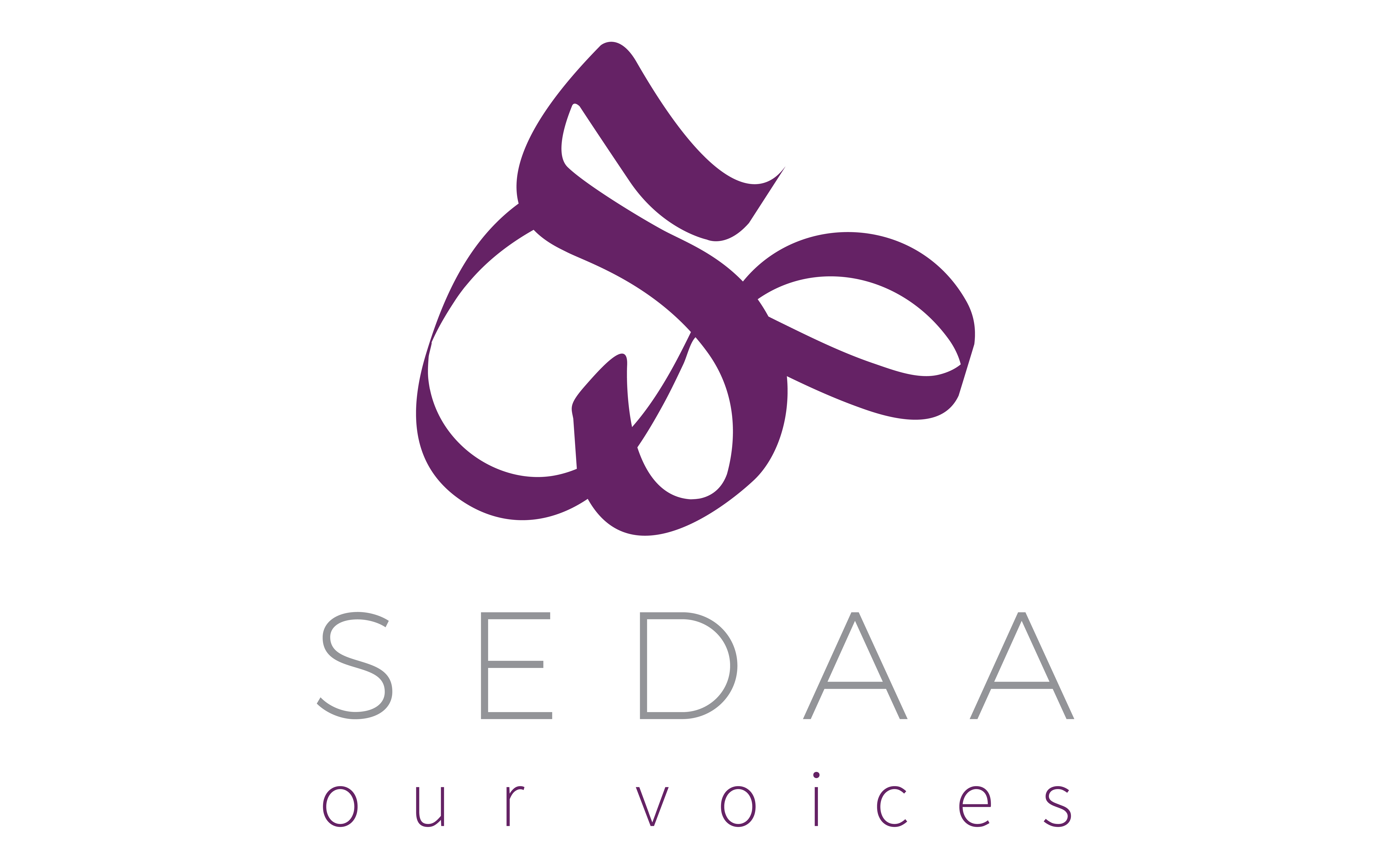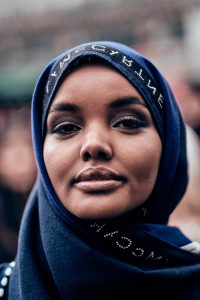By Khadija Khan
US Congresswoman Ilhan Omar, a Somali-American, recently said in a Vogue magazine interview: “To me, the hijab means power, liberation, beauty, and resistance.”
The debate around modesty culture has a great sway on how it is perceived in different cultures. Most commonly it is associated with the oppression of women in conservative societies.
It is rooted in religious and cultural mores to control women’s bodily autonomy, restraining a woman’s sexuality in order to rid society of moral depravity that may provoke male arousal.
This modest way of life obsessed with a dangerous purity culture, honour and virginity denigrates a women’s worth as a human being and reduces their existence to a sexual object that is only created to serve men.
Many women comply with this toxic modesty culture under duress across the Muslim world, where they are treated as a man’s property.
This modesty culture perpetuates victim blaming, honour killing and the overall subjugation of women by putting the onus on women to protect themselves from harassment and assault. Hijab, burqa and niqab are the visible pillars upon which this misogynistic system is upheld.
A handful of privileged Muslim women born and raised in free Western societies have been attempting to change the perceptions about modesty culture, by normalising the usage of hijab and other articles of clothing belonging to the ultra conservative Muslim traditions.
The characterisation of so-called modest wear, namely hijab, as a symbol of female empowerment may make sense where women have a degree of choice in western societies. But this doesn’t change the context in which certain garments were invented as a tool to repress women’s individuality.
The word hijab means ‘barrier’ or ‘partition’. However, in Muslim societies, partition entails gender apartheid, which further reinforces this modesty culture, where women are expected to be obedient to the authority of men. Therefore, the celebration of hijab as a symbol of women empowerment is a smokescreen.
Ironically, these very privileged Muslim women arguing for breaking barriers and demanding change never seem to challenge rigid religious beliefs which are overtly discriminatory toward women. They remain oblivious to the fact that imposition of hijab has always been a cornerstone of conservative and political Islam.
They cautiously use progressive lexicon about individual rights, freedom of speech, female empowerment and other characteristics of secularism/liberalism to normalise religious obligations for women, which is farcical.
They disingenuously try to project the progressive understanding of feminism onto their religion, which is inherently conservative when it comes to women’s rights.
Sadly, we now see female Muslim public figures making misleading statements about female empowerment in Islam while pandering to this toxic modesty culture that forces millions of Muslim women to live in miserable conditions under strict religious laws in Muslim countries.
It is beyond reasoning how the hijab, an instrument of gender oppression, is trending in the fashion industry, presented as a symbol for Muslim women: Sports Illustrated, which had a burkini-clad model on its cover; Playboy; Gap, Mattel Inc. and Nike have all done similar projects to glorify hijab.

Promoting a tool of women’s oppression as a badge of honour is nothing more than emboldening an extremist mindset that measures women’s modesty by the length of their cloths.
It ironic how model Halima Aden posed in a very sexual manner in her hijab and burkini for Sports Illutrated, when the purpose of the garment is otherwise and when, in conservative Muslim communities, women are also denied sexual agency.
It is also pertinent to mention that items of clothing, be it the burkini or bikini, hold no meaning for women’s liberation in the absence of the agency to act independently. By celebrating a culture which is specifically engineered for controlling women, they are tapping into the ugly side of the modesty culture.
They sell us the idea that the head-to-toe body covering is the choice of the individual, when in reality it perpetuates misogynistic attitudes that ties a woman’s character, modesty and piety to a piece of cloth.
But these attitudes are not limited to women living in Muslim countries. Many cases have been reported in the west of young girls and women being harassed, tortured, alienated, and ostracised – and in worst cases killed for refusing to comply with the modesty culture.
Shafilea Ahmed, a 17-year-old British girl was reportedly murdered by her parents for her ‘westernised’ behaviour. Pakistani Canadian teenager Aqsa Pervez was killed by her family simply because she dared to challenge the strict rules of this honour culture and refuse to wear hijab. These horrific murders are just the tip of the iceberg that make headlines and are then soon forgotten.
Muslim women in the public eye hardly mention these heartbreaking incidents, because it doesn’t help them gain popularity with their core supporters, the mainstream Muslim organisations that are dominated by conservative Muslims. The latter purposely promote those who wear the hijab as representations of “good Muslims”.
This is also how the prism of religion becomes the only identity for Muslim women and those who don’t comply are treated as not authentic enough, while the most conservative voices get the opportunity to dictate rules for women and how they should conduct themselves socially.
Those who are challenging this are fighting against all the odds. We owe it to these women fighting for women’s liberation in conservative societies. We need to amplify their voices to discard every single symbol of misogyny and patriarchy whether it comes from religion or not.
Western Muslim women who are free to make a choice should to stop pandering to this toxic modesty culture and stand in unconditional solidarity with these brave women.

Khadija Khan is a journalist and commentator based in Germany. You can follow her on Twitter.


Hijab is toxic when people get in between the wearer and God.
Hijab is simple when it is the wearer’s own choice.
Hijab is toxic when other people ridicule the wearer for not wearing it.
Hijab is simple when people leave it to the wearer’s own relationship with God.
Hijab is toxic when other humans equate level of faith to the presence of cloth on a woman’s head.
Faith is not something that can be seen.
Only God knows our true level of faith.
Women are inferior to men in Islam. That is a fact. Covering women up is part of that pervasive subservience. That is why men do not have to cover up, but women do. That is why a woman’s word is only worth half of a mans, that is why men can have many wives like Mohammad did, that is why the Qu’ran says that men can beat/hit/scourge disobedient women, that is why a woman can only inherit half, and on and on and on. These rules still govern women’s lives, especially in Muslim majority countries. These are the facts. You only look fooled when you deny them.
The hijab was invented by men to keep women in positions of subservience and to protect their property. That is why you get 2 years in prison for taking it off in Iran, and 14 years in prison for inciting other women to take it off. That is why women in places like Saudi or Yemen or Afghanistan go to prison for crawling out of their black cloth bags in public. That is why the Quran says a woman may present herself without a veil only to family and slaves. “It shall be no crime in them as to their fathers, or their sons, or their brothers, or their brothers’ sons, or their sisters’ sons, or their woman, or the slaves which their right hands possess, if they speak to them unveiled”- (Qu’ran 33:55) Again, a woman may present herself without a veil ONLY to family and slaves according to the words of Muslim god.
Ah yes, women not objectifying or sexualizing themselves to appeal to the male gaze is now apparently them being property for other men. As the Islamic teaching goes “If she isn’t a virgin, then she isn’t your property.” I love the Aqsa Parvez reference (your only citation in this entire godforsaken “article”) which is mostly characterized by an abusive father that used religion incorrectly to punish his children. Something that is only unique to Islam and no other Religion or culture. The author of this article is also weirdly obsessed with the success of Halima Aden whom she sexualizes herself and undermines the whole point of her article. Furthermore, the article goes on and on claiming that the hijab/Burka/Burkini does this and that, but only cites a case where the abuse stemmed from something as generic as a disgusting father trying to force his will on his daughter. How exactly is this a point?
P.S. for a website that prides itself on receiving opinions from anyone of “Muslim Heritage” there seems to be only one prevailing opinion here. Hmm strange.
Please take the burka off your brain. The truth is that “both the hijab and niqab strip women of their individuality. It stamps “Muslim” on their head as if that is the only aspect of them that matters. They are symbols like no other of what it means to be female under Islam: hidden from view, restricted and suppressed. Consigned to walking around with a mobile prison of one’s own. Separate and unequal. The outrage of our century. Like racial apartheid, sex and gender apartheid demands that women and girls be veiled, sit at the back of buses, and enter via separate entrances” – Maryam Namazie, 2008
It’s clear that muslim modesty doctrines are not contentless symbols of religious devotion. They are not reducible to garment. They rest on premises that reduce a woman’s value to her sexual purity and elevate that above all other social concerns. They treat feminine bodies as objects of discord and simultaneously hyper-sexualize them as objects while desexualizing them as subjects. They are inherently anti-woman in ideology, and even if they were not, the scale and sanction that enacts them constitutes such constraint that the conclusion of oppression is inescapable
Muslim modesty doctrine is vastly institutionalized and normative and enacted by legal, extrajudicial, social, and economic forces, and also contributes to an epidemic of traumatic hyper-sexualization of the bodies of prepubescent girls who are deemed too tempting to men, far before these girls are capable of something like informed consent. The fact that you refuse to acknowledge any of this reveals to us your Islamist agenda. Take the burka off your brain and start thinking.
Well said!!!!!!
I am OVER THE MOON to have had the sheer honour to stumble upon this gem of an article. It just cheers me up to no end when I find someone whose views seamlessly match up with mine. This journalist absolutely, burka head to f*cking toe, GETS IT. Vah! What a gorgously bold and eloquent analysis. Hats/hijabs off to you, in awe, my friend.
Thanks Alisa! If you would also like to contribute then get in touch
her real twitter is: https://twitter.com/KhadijaKhan__